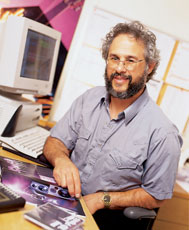|
|
A Modest Proposal |
January 1999 |
|
Why not standardize MIDI device-editing profiles?
It is my belief that open technical standards create opportunities for everyone, leading to better products for musicians and more growth in our industry, especially if such standards contribute to better connectivity and ease of use. That's why I wrote about Cakewalk’Äôs new AudioX proposal last month and discussed standards for DSP plug-ins and for streaming-audio drivers in the March 1998 issue. This month, I'm going to float a trial balloon for another standard, one that doesn't exist yet.
Most of the time, when a new programmable MIDI product is released, there is a significant delay between the release date and availability of software editors for the product. In some cases, editors never become available, or they only become available as profiles in one or two editor/ librarian programs.
You probably don't need me to tell you about the benefits of editor/librarians and sequencer control panels. If you have ever waded through pages of parameters in some sophisticated, MIDI-programmable device, you know why it's better to be able to see all the parameters on a nice, large computer monitor. Furthermore, controlling your devices from a sequencer control panel allows you to record your changes for real-time playback, to the extent that the device supports that capability.
But writing an editor/librarian profile is not easy, even assuming your ed/lib software allows it. Creating a custom control panel in your sequencer is no picnic either. If you use more than one sequencer and have a lot of MIDI devices, well, you get the picture. For much the same reason’Äîprogramming time’Äîhardware manufacturers are unlikely to support each new MIDI device with separate device profiles for every editor/librarian, not to mention virtual control panels for every sequencer. Many hardware manufacturers offer no software support.
But what if there were a standard, cross-platform, device-profile format for MIDI devices that worked like a MIDI plug-in architecture? As hardware manufacturers released a new device, they could release just one device-specific profile that would open in every editor/librarian and sequencer. This device profile would be preprogrammed with all the code for every editable parameter and real-time controller in the unit.
Manufacturers could charge a modest amount for these profiles or could bundle them as an added value. Because the manufacturer would have to write only one profile per device, it would be a manageable task. The profile could be easily updated to account for hardware OS updates. I think that many musicians would regard the availability of a device profile as added incentive to buy the device. After a while, you would be able to easily control the parameters of all your MIDI devices from your computer, even when you changed host programs.
I have proposed this idea to representatives of several leading developers of sequencer and editor/librarian programs, and the general reaction was positive. That doesn't mean it's going to happen, of course, but they liked the concept. I'm very interested in getting responses to this idea. Please e-mail me your comments at emeditorial@intertec.com. |
